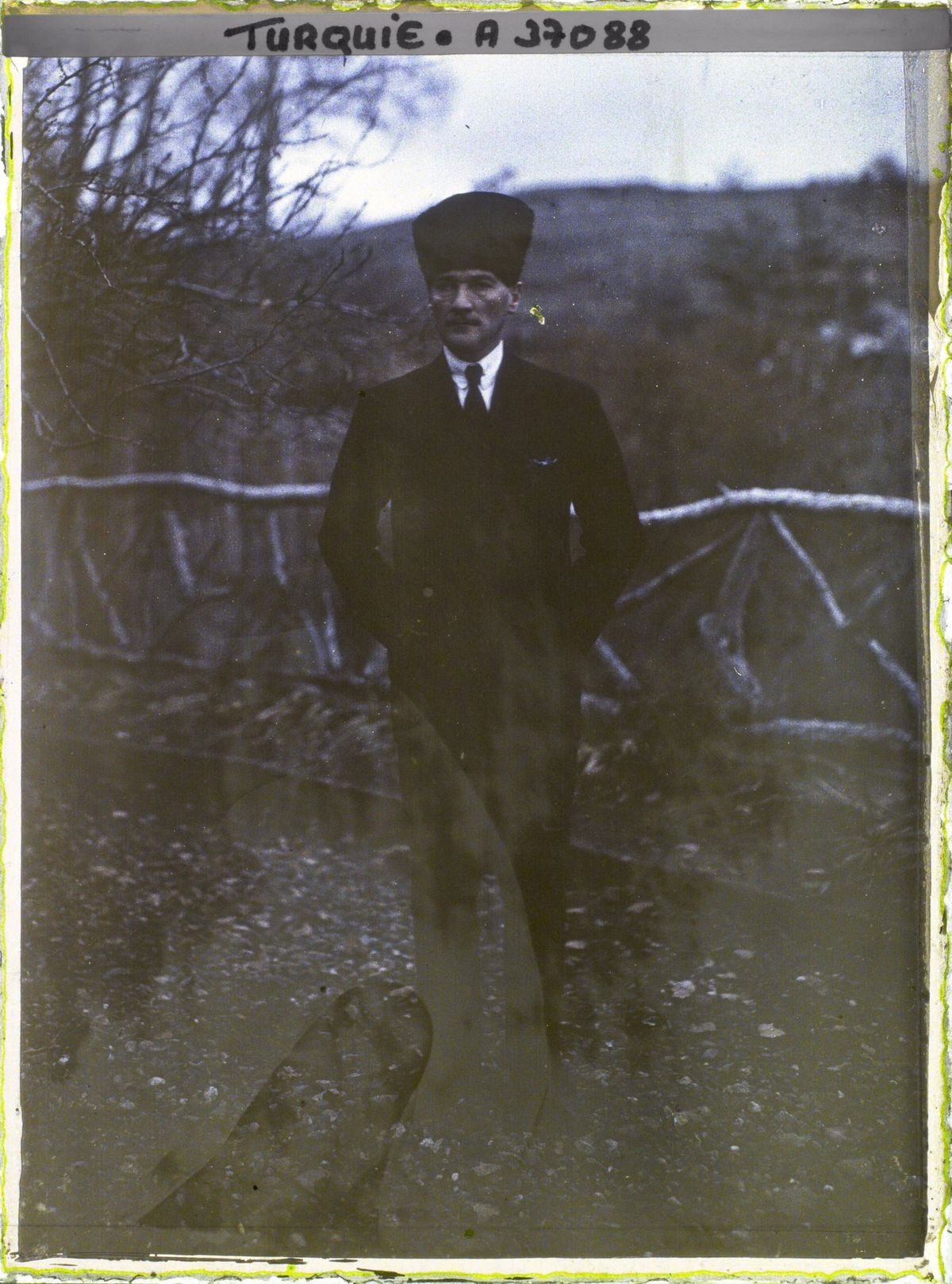The most beautiful thing about photography is that it confines the particular moment forever. Since it achieves one of the earliest desires of human beings that preserving memories (especially young reflectance of themselves), it immediately gained attention and became popular. The mechanism is actually so basic and known from the earlier centuries. If you have a simple box that contains a single slight hole, in order to obtain light from a particular direction, you can get a reverse image of the original one standing in front of the hole. This is called as camera obscura. Photography is actually based on this concept. However, since this article is not about basics of the photography, I do not intend to give more details. The topic is about a method for early color photography.
When photography was invented, it was so popular as expected but there was a problem: people live in a color world, not black & white as in photos. To solve this issue, people started to work and suggested some solutions for color photography. There were some efforts to meet the desired result but most of them were cumbersome considering their method. There were not practical. For example, one of them required to take three different photos from the same position using three different filters consisting of colors including red, green, and blue in order to obtain the real color of the objects/people/moment. On the other hand, Lumière brothers, who had invented the cinematograph, which is actually the cinema, developed a more efficient method using potato starches: Autochrome Lumière. This technique consisted of a glass plate including infinitesimal particles, which are randomly separated potato starches with the mean length of 15 microns, dyed with red-orange, green, and blue-violet colors. As you can imagine, this plate was transparent and the light was passed through it producing the color of the particular moment. The results were quite good and because of the technique, they were causing some kind of pointillist effect. Moreover, some examples were like an oil painting. Due to its success, Autochrome Lumiere was considered as the main method for color photography by people, especially artists. You can see some examples below.

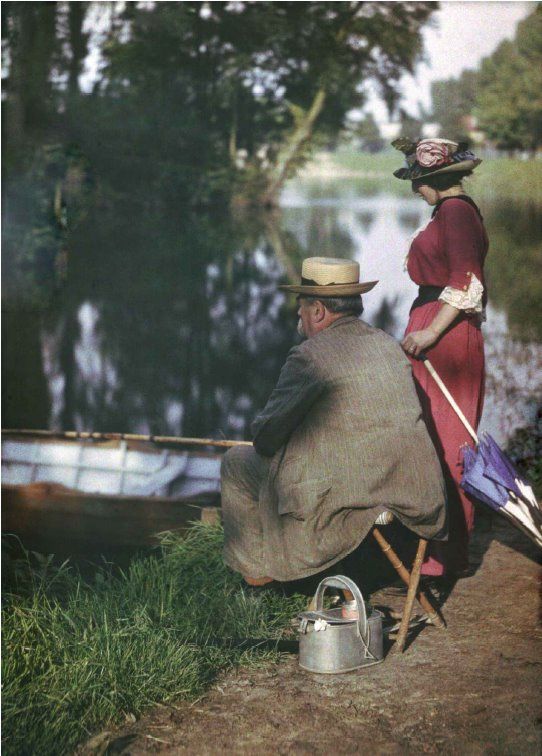

Looking at a color photo taken at least 40-50 years ago always impresses me. The reason is that I can see that there was a life in that time and those people were young like me. Afterwards, seeing people getting older also has an impact on me. On the other hand, if the photo is black & white, its effect is lesser on me since black & white photos remind the old times physiologically. Since I am used to seeing color photos (not colorized!) from the 1960s at most, realizing the fact that there was a creative method to take original color photos in the 1910s literally shocked me! Especially, if you examine the three photos below, you may understand what I have felt.
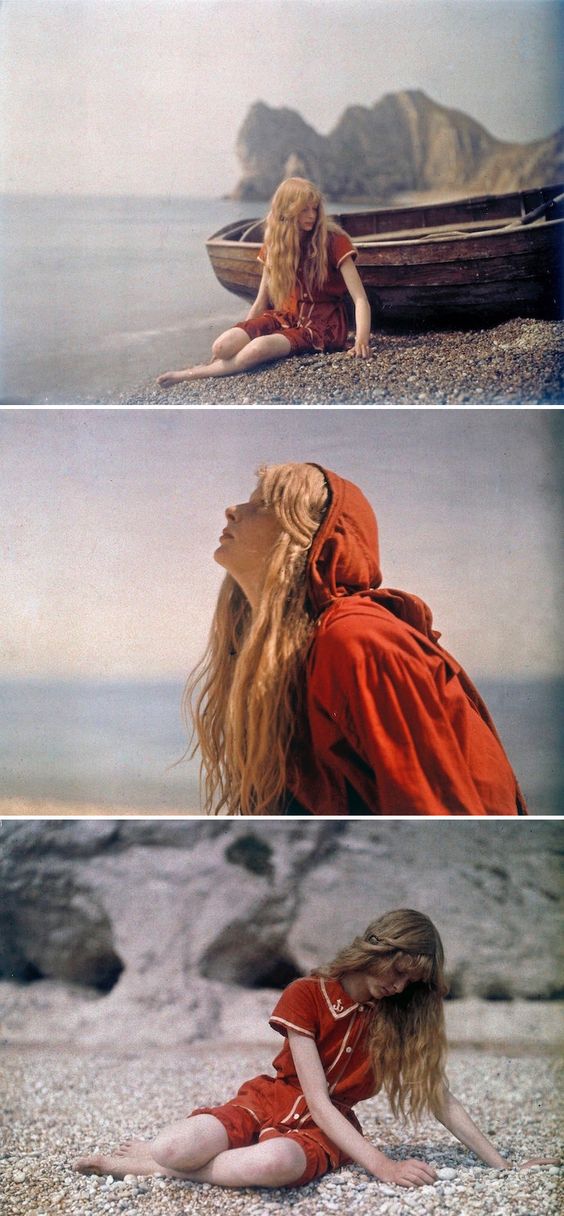
These photos were taken in 1913(!) by electrical engineer Mervyn O'Gorman at Lulworth Cove in Dorset, England. The girl in the photos, namely Christine, is his daughter. When I first saw this, I thought that it is an advertisement and taken nowadays. Since we are used to seeing black & white photos considering that era, we generally missed that there is no difference between us and those people regarding general thoughts, following fashion etc. However, seeing a color photo can change this misperception easily.
After the invention of Autochrome Lumiere, photographers, who had the opportunity to reach and buy those glass plates, took photos from all over the world. You can find some of them online, especially in photo apps like Pinterest, Flickr etc. I explored some of those photos with great excitement. As one can imagine, each of them expresses the era including the enthusiasm of 20th century French romanticism which continued to late 1940s. On the other hand, apart from the photographers, the color in the photographs took attention from collectors. One of them, Albert Kahn, a French banker, created the most important archive of Autochrome Lumière: The Archives of Planet. It includes 72.000 color photographs from 50 countries! Subsequently, I wondered that if there are color photos from my country, Turkey. What I found was beyond my imagination.
Albert Kahn entrusted many photographers to take color photos from various countries in order to create his project The Archives of Planet. Some of those photographers including Stéphane Passet, Auguste Léon, and Frederic Gardner, came to Turkey and took very important photographs from İstanbul, İzmir, Ankara, Karahisar, Turgutlu, Afyon, and Antakya between 1912 – 1929. Since I used to see photos of Istanbul as black & white, color photographs of the city impress me. You can see some of them below.
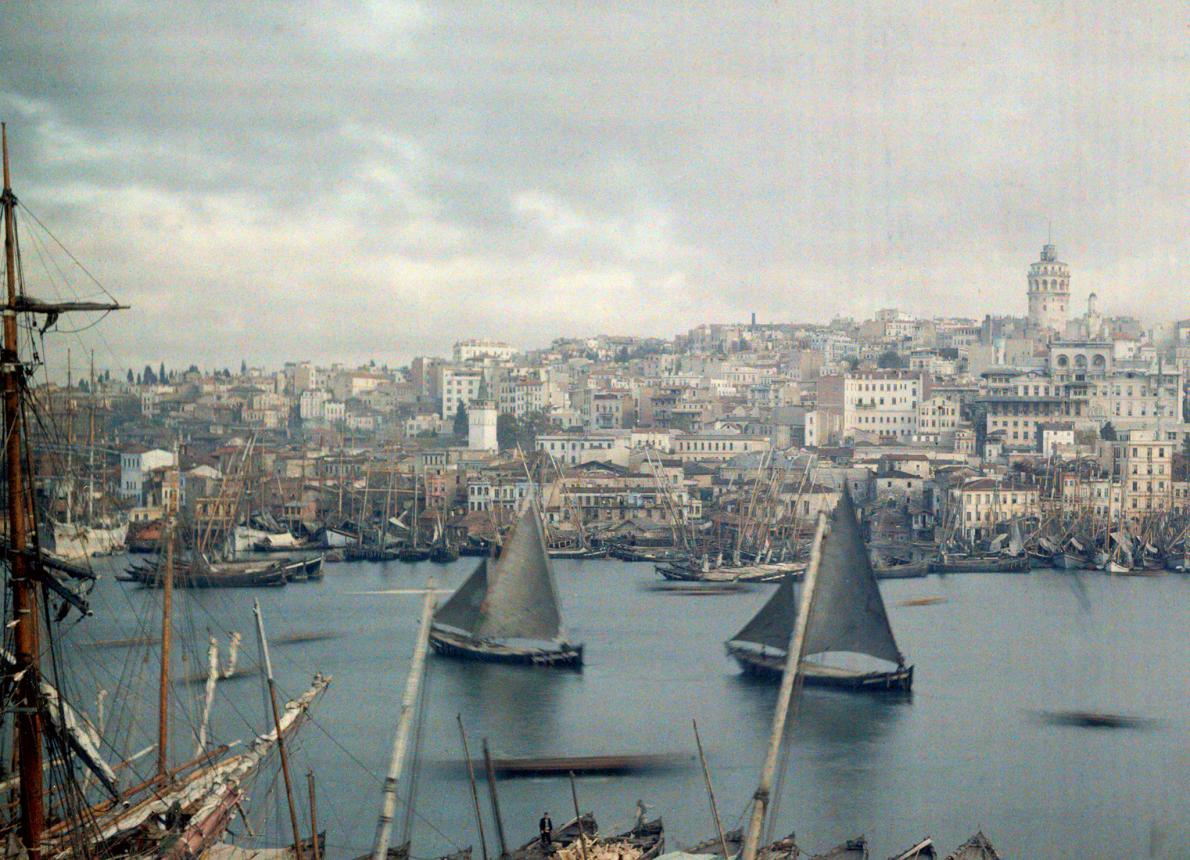
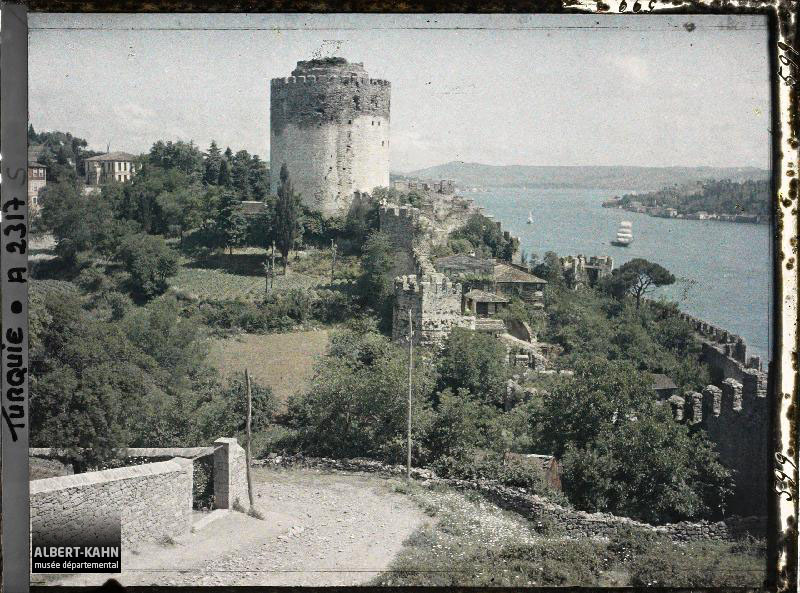

If you know, Turkey was continuously at war from 1912 to 1922, therefore the photographs taken in Anatolia are so important since they show the damage and poverty in color. If you investigate those photos from the website of Archives of Planet, you can see that even the faces of people tell you their sad stories. However, even though all photos taken in Turkey are valuable for me, the following is the most valuable: The photo below is the only original color photograph of Mustafa Kemal Atatürk (there are few others taken on the same day with Rauf Orbay but I don’t include them here), who led the Turkish War of Independence and founded the Republic of Turkey. The photo is taken by Frederic Gardner on 29 December 1922 using the Autochrome technique while he was employed in Anatolia. In those days, Greeks had been defeated by Mustafa Kemal Pasha but the republic was not declared yet.
There are two additional photos below that I want to mention and express my feelings about. The first one was taken at the chamber of the council of ministers at Grand National Assembly in Ankara, 1922. For me, it is so ironic and amazing to see the well-known black & white photograph of Mustafa Kemal Atatürk, which is placed on the wall at the top right, in a color photo taken in 1922! Another photograph is taken at the general assembly hall of the Grand National Assembly. Since I saw the various black & white versions of this photo, I am surprised to realize that the desks were blue! By the way, note that the republic was declared in this very small hall.


In color photography, Autochrome Lumière was the pioneer until the 1930s in which the color film, Kodachrome, invented by Kodak. Even though taken photographs using the Autochrome technique were so beautiful and unique, images were not as exactly true as the photos produced by color film. Moreover, glass plates were so fragile. Thus, it was superseded by Kodachrome. Even though Lumière company introduced color film versions of Autochrome such as Lumière Filmcolor sheet film in 1931, Lumicolor roll film in 1933, and lastly Alticolor in 1952, they were not successful and discontinued.
The most interesting thing about color photography is that it was not widespread until the late 1960s even though it was invented in the early 1910s and matured in the 1930s. Apart from common people, leaders of that era also preferred black & white photographs. There were two reasons for this. First, taking color images was expensive compared to the traditional black & white photographs. However, all we know that if people really like something, they would go, buy and use it. For example, I remember that Steve Ballmer, former CEO of Microsoft, said that no one would buy iPhone because it is so expensive. However, even though the original iPhone was so expensive when it was first put on the market, people bought it with an enthusiasm. I think this is same for all new products and technologies so it was not the main reason that people did not choose color images. Therefore, the real (second) reason was that people did not like the idea, which is the color photo. It sounds like a joke today but this was the reality at that time. People thought black & white photos are so dramatic & artistic, and color images did not reflect them. They thought that they already see each other in a color, so images should be different. This is actually true; if you compare the same photos with color and without color you can clearly see that black & white is cooler. This opinion lasted a very long time and thus people preferred black & white photos.
It is so peculiar that in that times taking a photograph was a ritual and significant for all families and people, while today we can use it as a basic function of our phones which are in our pocket. Things are changing over time, so maybe some objects we use today would be basic toys for people in the future. However, one thing will remain same: people always want to show themselves and thus, they find a way/tool to perform this. The day before there had been the portrait, yesterday there was the photograph, and today there is social media.
